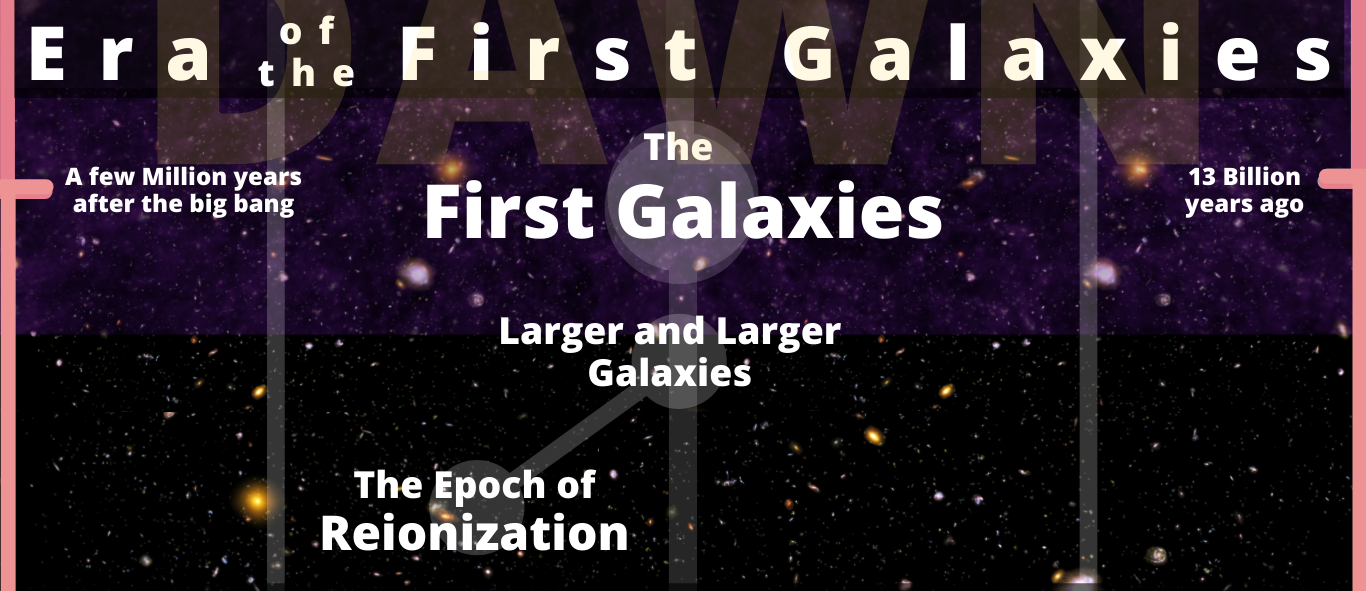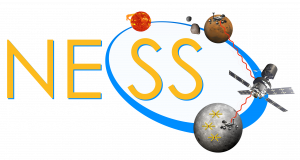The First Galaxies
The first stars formed in tiny gas clouds that they were torn apart by the explosions of those stars. But the dark matter clumps in which they formed continue to grow over time, and eventually those clumps grew large enough to retain their gas, allowing long-lived galaxies to form - a transformative moment in the history of our Universe. Astronomers have not yet seen these objects, but they eagerly seek signatures of the first galaxies!
Image: Dwarf Galaxy NGC 1140, a modern galaxy similar to those in the early Universe.
Credit: NASA Goddard
Larger and Larger Galaxies
The spin-flip background is so difficult to detect - partly because of signals generated on Earth itself. Removing this contamination is a challenging problem, but it is much easier if the telescope can be shielded from the radio transmitters on Earth! The far side of the Moon offers just such an opportunity, and astronomers are hoping to use it as a platform to observe the Cosmic Dawn.
Image: This ultraviolet image from NASA Galaxy Evolution Explorer is of the interacting group of galaxies known as Stephan Quintet.
Credit: NASA/JPL-Caltech/SSC
Epoch of Reionization
Although the atmosphere presents challenges for observing in the near-infrared, it is far from impossible. Ground-based telescopes have the advantage of size, which determines how much light a telescope can collect from these distant galaxies. The Keck Telescopes and other large observatories (with mirrors about 30 feet, or 10 meters, across - four times more than the Hubble's mirror) have helped us to understand some of the detailed properties of distant galaxies. This decade will see the construction of several even larger telescopes, up to 100 or so feet across - four times larger than the James Webb Space Telescope. This new generation of telescopes, such as the Thirty Meter Telescope, will be crucial for making careful measurements of galaxies in the Cosmic Dawn.
Image: Star cluster NGC 3603, a modern example of a young cluster surrounded by gas and dust, helping us understand massive star formation in the early universe.
Credit: NASA, ESA, R. O'Connell, F. Paresce, E. Young, WFC3 Science Oversight Committee, and Hubble Heritage Team



